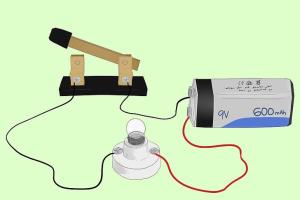Ultimate Guide on How to Measure Amperage: Techniques & Tools Explained

-
Quick Links:
- 1. Introduction
- 2. Understanding Amperage
- 3. Why Measure Amperage?
- 4. Tools for Measuring Amperage
- 5. Step-by-Step Guide to Measure Amperage
- 6. Common Mistakes to Avoid
- 7. Real-World Case Studies
- 8. Expert Insights on Amperage Measurement
- 9. FAQs
1. Introduction
Measuring amperage, or current, is a fundamental skill in electrical engineering and maintenance. Understanding how to accurately measure the current flowing through a circuit can help diagnose issues, ensure safety, and improve the performance of electrical systems. This comprehensive guide will walk you through everything you need to know about measuring amperage, from basic concepts to advanced techniques.
2. Understanding Amperage
Amperage, measured in amperes (A), indicates the flow of electric charge in a circuit. It is essential for determining how much electrical power a device consumes and can impact everything from circuit design to electrical safety.
Key concepts include:
- Direct Current (DC): Flows in one direction.
- Alternating Current (AC): Changes direction periodically.
- Ohm's Law: Defines the relationship between voltage (V), current (I), and resistance (R) as V = IR.
3. Why Measure Amperage?
Measuring amperage is crucial for several reasons:
- Safety: To prevent overheating and electrical fires.
- Performance: To optimize electrical systems and ensure they operate efficiently.
- Diagnostics: To identify faults in electrical circuits.
4. Tools for Measuring Amperage
Various tools can be used to measure amperage, each with its advantages and limitations:
- Multimeter: A versatile tool that can measure voltage, resistance, and current.
- Clamp Meter: Measures current without direct contact with the circuit, useful for large cables.
- Shunt Resistor: A precision resistor used to measure current in high-power applications.
- Current Probes: Used with oscilloscopes for detailed analysis of current waveforms.
5. Step-by-Step Guide to Measure Amperage
5.1 Using a Multimeter
- Turn off power to the circuit.
- Set the multimeter to the correct current range.
- Connect the multimeter leads in series with the circuit.
- Restore power and read the measurement.
- Turn off the power and disconnect the multimeter.
5.2 Using a Clamp Meter
- Open the clamp and place it around one conductor.
- Ensure the clamp is closed securely.
- Set the clamp meter to the appropriate setting (AC or DC).
- Read the measurement displayed on the meter.
6. Common Mistakes to Avoid
When measuring amperage, avoid these common pitfalls:
- Not using the correct meter settings.
- Measuring amperage in parallel instead of series.
- Failing to ensure the circuit is safe to measure.
7. Real-World Case Studies
Understanding the practical application of amperage measurement can significantly enhance your skills:
Case Study 1: HVAC System Maintenance
In an HVAC system, a technician measured the amperage to ensure the compressor was operating within specified limits. By identifying a higher than normal amperage, he diagnosed a failing capacitor, preventing a costly breakdown.
Case Study 2: Electric Vehicle Charging
Engineers measured amperage during the charging of an electric vehicle to ensure the charging station delivered the correct current. This attention to amperage helped optimize charging times and maintain battery health.
8. Expert Insights on Amperage Measurement
According to industry experts, accurate amperage measurement can lead to significant cost savings and increased safety in electrical systems. Regular testing and monitoring can help catch potential issues before they escalate.
9. FAQs
1. What is the difference between AC and DC amperage?
AC amperage changes direction periodically, while DC amperage flows in a single direction.
2. Can I measure amperage with a digital multimeter?
Yes, digital multimeters are commonly used to measure amperage when set to the appropriate current range.
3. Is it safe to measure amperage?
Yes, but always ensure the circuit is de-energized before connecting the meter, and follow safety protocols when working with live circuits.
4. What happens if I measure amperage incorrectly?
Incorrect measurement can lead to equipment damage, personal injury, or inaccurate diagnostics.
5. How often should I measure amperage in my circuits?
Regular measurements are recommended, especially in high-load or critical systems, to ensure everything is functioning correctly.
6. What are the signs of faulty amperage measurements?
Inconsistent readings, overheating components, and unexpected circuit behavior can indicate faulty measurements.
7. Can I measure amperage without disconnecting the circuit?
Yes, using a clamp meter allows you to measure amperage without disconnecting the circuit.
8. What is a shunt resistor and how is it used?
A shunt resistor is a precision resistor used to measure high currents by creating a small voltage drop proportional to the current.
9. What is the importance of Ohm's Law in measuring amperage?
Ohm’s Law (V = IR) helps understand the relationship between voltage, current, and resistance, guiding measurements and calculations.
10. How does temperature affect amperage readings?
Temperature can affect the resistance of materials, potentially altering amperage readings. Always consider environmental conditions during measurement.
Random Reads